Stranger in a Strange Land: Fw 190 A-5, 325th FG, Lesina AB 1943
When dealing with World War II aviation, there is little opportunity to come across distinctly colourful or at least unusual paint schemes. Only in one area can one find a consistently high density of spectacular "special paint jobs": in captured aircraft of the respective opposing side! But it is not only the multi-coloured appearance that fascinates: as will be shown, captured aircraft also prove to be a highly exciting affair apart from their colourful design.
Even the banal-sounding question of why a considerable effort was made to obtain enemy aircraft material yields a number of interesting answers: on the one hand, one encounters obvious reasons: in an age in which victory and defeat are essentially determined by the technical superiority of one's own war machine over that of the enemy, knowledge of the enemy's technical capabilities is essential.
Thus, the enemy's cutting-edge technologies, such as the latest radio detection systems built into night fighters or innovative turbine engines, are naturally highly coveted prey. Wherever and however this high-tech found its way to one's own side - through defections, navigational errors or even in the course of acquisition by one's own commando operations - the piece of enemy cutting-edge technology was quickly put through its paces and evaluated.
However, attention was not only focused on the latest innovations. An enemy aircraft that had fallen into one's own hands offered the invaluable opportunity to be actually flown. The knowledge gained from this could be directly converted into tactical instructions for the own crews - and thus save lives and decide campaigns. An impressive example of this is given by the British test pilot legend Eric "Winkle" Brown, who describes in his book „Wings on my Sleeves“ how he and his fellow test pilots pushed Messerschmitt Bf 109s to their limits - or beyond. In a dive, the German aircraft were to be brought into critical high-speed ranges in order to find out their Mach number. At this speed, close to the then unknown "sound barrier", the rudders of an aircraft begin to "freeze" or even reverse their effect due to the detaching boundary layer, shock waves of the air compressed into a wall finally lead to flight conditions that can no longer be controlled and a disintegration of the aircraft. In short: the aircraft with a higher Mach number was able to dive faster! What was found out here at the risk of their lives was therefore essential information for the tactics of air combat.
Another interesting question is, of course, the organisational framework in which the testing of the enemy aircraft took place. In keeping with the importance of the matter, virtually every side had its own institutions in which these evaluations could take place. Germany had its own unit, the 2nd Squadron of the "Versuchsverband Oberkommando der Luftwaffe", known somewhat casually as the "Zirkus Rosarius", which was tasked with demonstrating captured enemy aircraft to Luftwaffe operational pilots. Usual the aircraft of the "Circus Rosarius" had previously been technically tested and evaluated at the "Erprobungsstelle Rechlin ", with which they were in close contact.
In connection with Rechlin and the aircraft of the "Circus Rosarius", the still mysterious "KG 200" should also be mentioned. Parts of this unit, which operated under the strictest secrecy, carried out covert operations with captured B-24 Liberators or B-17 Flying Fortresses over occupied and enemy territory in order to drop off agents or support their own side's espionage activities. These are also aspects to be connected with the topic of "captured aircrafts"!
The other side also had its "Circus Rosarius": on the British side, the testing of captured aircraft took place preferably at the "No. 1426 Flight" of the Royal Air Force. This unit, at that time also called "Rafwaffe", thanks to its equipment with Ju 88s, Bf 109s, He-111s, Fw 190s, etc., made its own pilots familiar with the prey aircraft, analogous to the Circus Rosarius. The actual aeronautical-technical evaluation, on the other hand, mostly took place at the "Aerodynamics Flight of the Experimental Flying Department" and the "Wireless & Electrical Flight" (W&EF) based in Duxford.
In addition to testing in the large test centres mentioned above, the shifting front lines in all theatres of war provided a wide range of opportunities for informal, "wild" testing - and this also puts us on the track of the captured Fw 190 A-5 shown here!
The original: Fw 190 A-5, 325th FG
In the sources this Fw 190 with unknown serial number appears in the spring of 1943 as booty of the 317th FS/ 325th FG in Lesina, an airbase near Foggia. The attractive blue, red and yellow livery was given to the aircraft on the occasion of its on-site flight test, the striking paint was probably intended to prevent friendly fire. One of the Squadrons pilots, 1st Lt. Jack Snifton of the 317th FS is on record as the "test pilot". The captured fighter was soon grounded because of worn tyres, but this was lifted after repairs. With the withdrawal of the group, which moved from Lesina in southern Italy to Rimini in March 45, the traces of this special Fw 190 finally disappeared.
Finally, a few words about the 325th FG: the three fighter squadrons of the unit were equipped with P-47 Thunderbolts at the beginning of this period, but these were to be exchanged for P-51 Mustangs in March 1944. The main task of the 325th FG, however, remained the same: from its bases, it mainly flew escort missions for bomber groups that targeted targets in southern Germany and Austria from Italy. This also included the famous "shuttle" attacks, in which they no longer flew back to Italy but on to Soviet bases in north-eastern Europe.
On the construction process
For the realisation of this project I used the well known kit of the Fw 190A from Hasegawa and for the fancy markings I used the highly recommended decal sheet "Captured Butcherbirds Part 5" from Karaya. Hasegawa's "Würger", first issued in 2005, can still convince in all relevant categories such as accuracy of fit, beauty of the details and reasonableness of the parts construction.
What some may see as an age-typical shortcoming of this kit, I have found to be an advantage, at least in this project: the assembly is not overcomplicated, but leads quickly, dignified and straightforward to a solid result. In view of some experiences with more recent kits, I have found the accuracy of fit to be phenomenal. By the way, the Fw 190 comes from the same packaging that includes a figure of Josef Priller and beautifully made parts of a BMF 327 Coupé. Of course, I also built this, but not in connection with the topic of " captured vehicle"!
The discussion of "captures aircraft" will be a general theme throughout my modelling activities in the coming year. Already with the first model of this planned series I can say: this motif has definitely "captured" me in the best sense of the word!

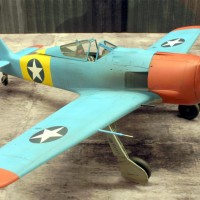
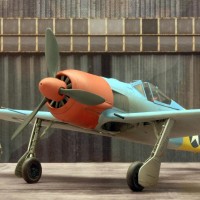
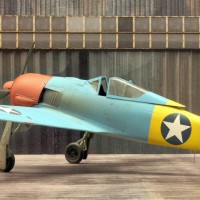
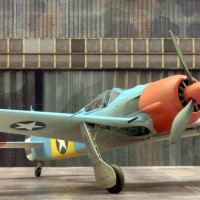
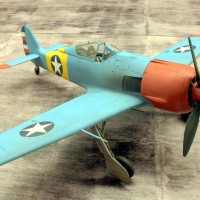
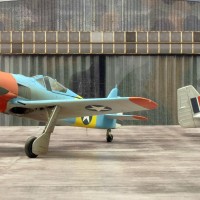
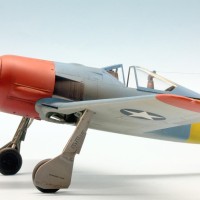
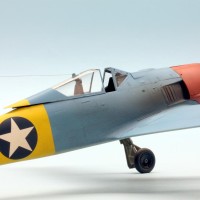
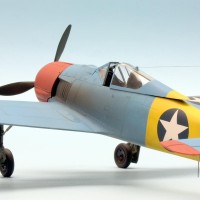
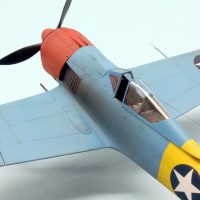
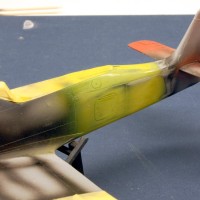
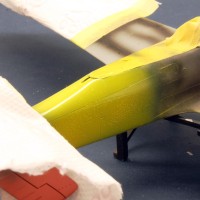
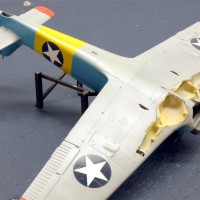
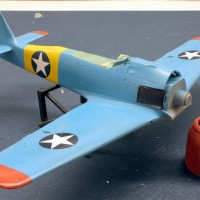
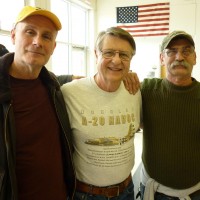
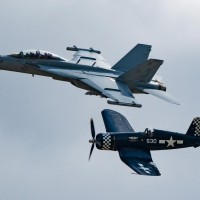
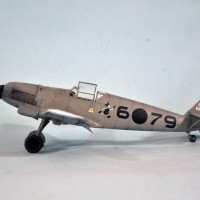
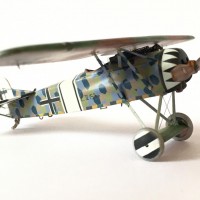
Fantastic result and amazing historical support, Roland! As it is always the case with your articles, this one is also a total success. Apart from admiring your model, I also learned many great things.
Well done, my friend!
I am very happy about your words, thank you my friend!
Nice work on this (as usual) Roland @rosaschsenhofer
Tom, thank you very much!
Excellent result on this very unusual scheme, Roland @rosachsenhofer
Beautiful build and ditto article.
Looking forward to more of your captured aircraft this year.
Thank you- soon we will continue with the theme!
Love it. I have the kit and decals in the to-do pile
Thank you very much for that!
Wow - I've seen some colorful captured birds, but I'd never seen this one! That is some striking colors on that 190! Very nice project.
Thank you for your words Greg!
Great to see such unusual livery on a Fw-190! What a colorful bird and some interesting history to go with it! Well done Roland @rosachsenhofer. ? ?
Thank you Gary, your words are quite appreciated!